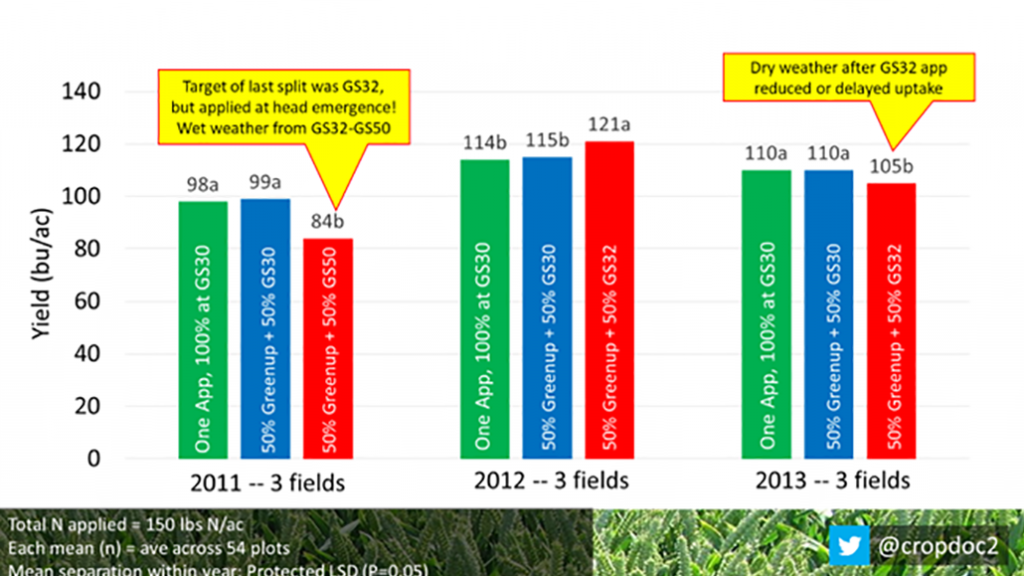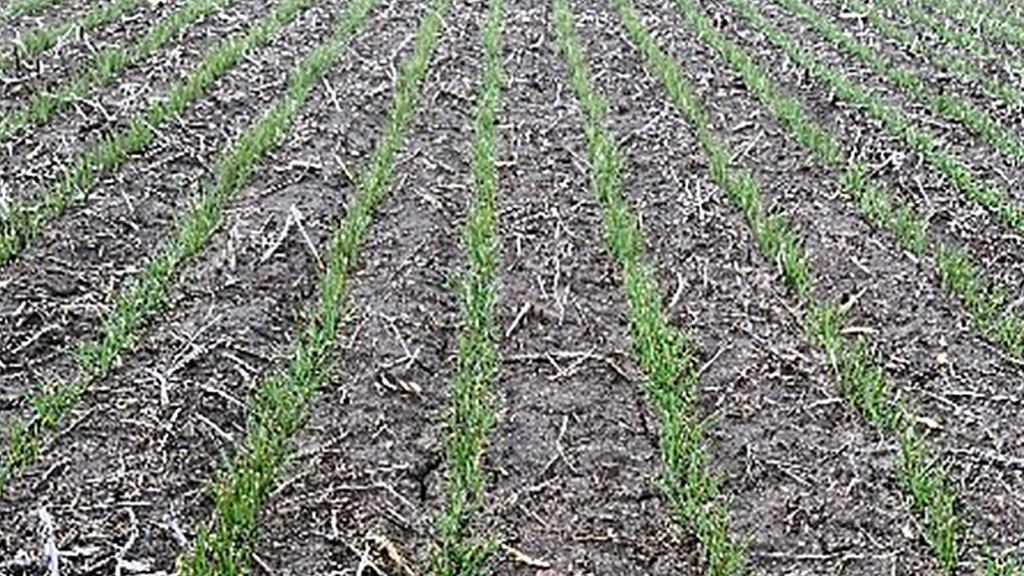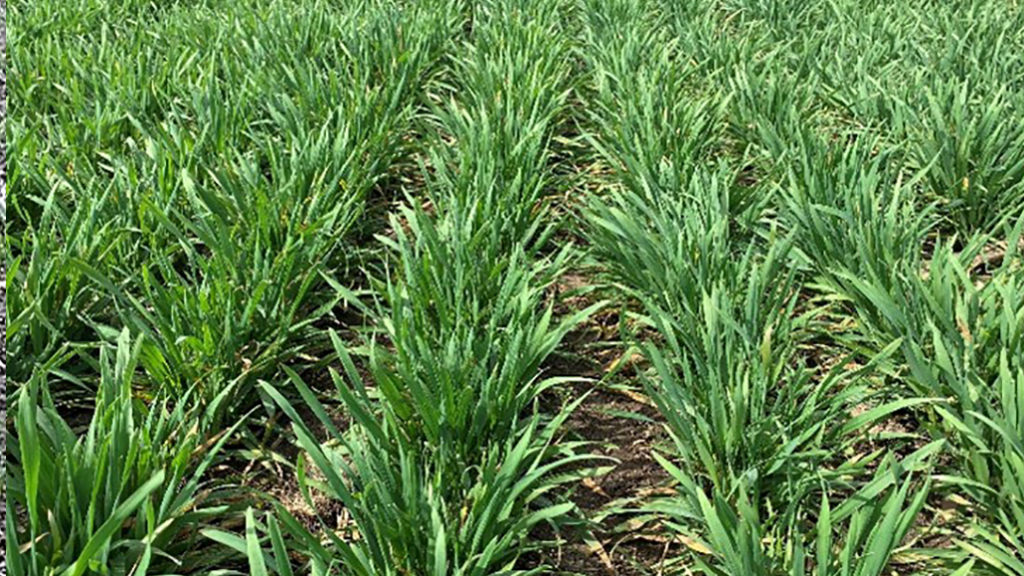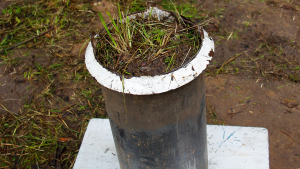Split apply nitrogen?
AGRONOMIC INFORMATION FROM ONTARIO'S CROP SPECIALISTS

SHOULD I SPLIT apply nitrogen in winter wheat?
SOME THOUGHT PROCESSES TO CONSIDER ….
SINGLE APPLICATIONS
- Convenient, low application costs – only one pass
- Can produce high yields if lodging risk and Nitrogen (N) losses are minimal
HOWEVER, SPLIT NITROGEN APPLICATIONS:
- Enables an early N and Sulphur (S) application to stimulate or maintain tillers in late-planted wheat, while minimizing loss of N
- Potential to increase N use efficiency, especially with high fertilizer prices
- Enables a more tailored N management strategy depending on the season and perceived yield potential
- Reduce lodging risk while using higher rates of N to maximize yield potential
- Potential to increase protein in hard red wheat varieties especially if N losses occur after early applications
In some years, split N applications may provide little or no benefit to yield compared to a single application (Figure 1). When planning your nitrogen management strategy, various factors including crop development stage, variety and field-specific characteristics need to be considered to maximize returns.

DEVELOPMENTAL STAGE:

Fields with minimal growth and tillering early in the spring tend to benefit from an application of nitrogen and sulphur at greenup (Figure 2). This early application helps to maintain and encourage additional tillering. If the first application is held off until later in the spring when plants reach GS 30, some tillers may be lost if N is deficient. With an early application at greenup, a second application in these fields can then be made between GS 32-39. A single application strategy with all N applied upfront may not be advisable if applied at greenup because of N loss potential.

In contrast, in early planted fields, with high seeding rates, a variety susceptible to lodging or too many tillers, the risk of lodging is greater (Figure 3). In these fields, delaying an N application until GS 30, and applying only a portion of total N, may reduce the risk for lodging by shortening the lower stem internodes and discouraging more tillers. The second application can be made between GS 32-39.
FIELD SPECIFIC CHARACTERISTICS:
Soil type is also an important factor to consider. N losses through leaching and/or denitrification are more likely to occur with early-applied N on wheat before the onset of rapid N uptake (GS30). The potential of these losses tends to be the highest on sand and clay soils (not so much on loam). However, N losses are insignificant if rainfall after application is not excessive.
Early N applications also enables an early application of S. This is particularly important on sandy soils or soils with low OM levels and no history of manure. Sulphur deficiencies tend to occur early in the growing season before soils warm up and mineralization begins.
























